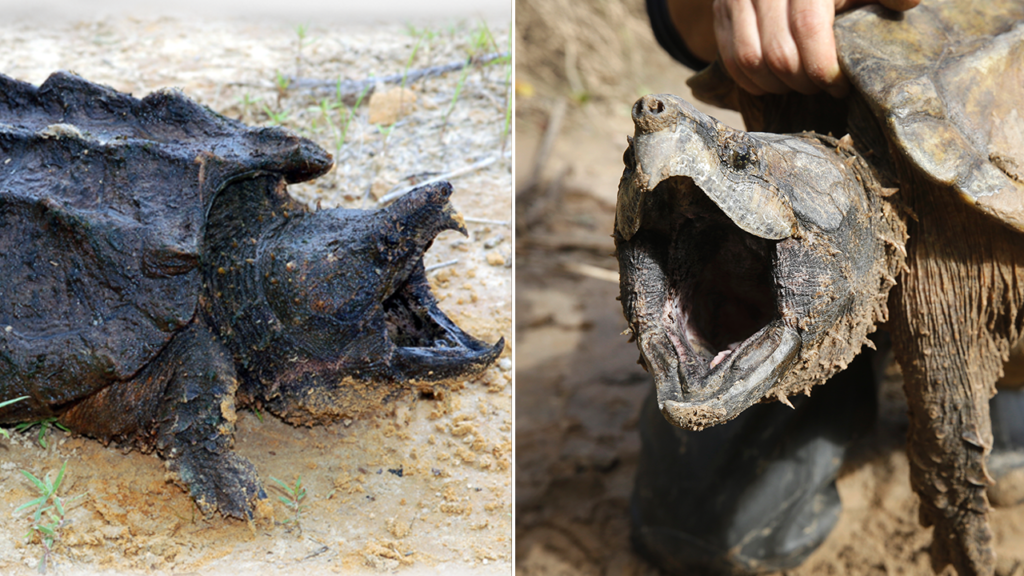The Kansas Department of Wildlife and Parks is collaborating with researchers from Missouri State University to introduce alligator snapping turtles into state waters this fall. Juvenile alligator snapping turtles raised at the Tishomingo National Fish Hatchery in Oklahoma will be tagged and released into a section of the Neosho River, a tributary of the Arkansas River that runs approximately 463 miles long through eastern Kansas and northeastern Oklahoma, ultimately emptying into the Mississippi River watershed.
These turtles, which are between 6 and 8 years old, are the largest species of freshwater turtles. Male alligator snapping turtles typically weigh between 155 and 175 pounds, as reported by the National Wildlife Federation. The reintroduction of alligator snapping turtles from the hatchery has been carried out in Illinois, Tennessee, Louisiana, and Oklahoma, with around 1,200 juvenile turtles released into the Caney, Neosho, and Verdigris Rivers in northeastern Oklahoma, according to a press release from the Kansas Department of Wildlife & Parks (KDWP).
Researchers will be able to monitor the tagged turtles to study their movement patterns. The turtles will be recaptured to assess their survival and growth rates. The population of alligator snapping turtles has been declining due to habitat degradation and over-harvesting for their meat, as noted by the National Wildlife Federation.
The presence of several dams on the rivers in Kansas poses a significant barrier to the natural establishment of these turtles in the state. Despite previous releases in Oklahoma, none of the turtles have been captured in Kansas due to these obstacles, according to a KDWP press release. The initial release is scheduled for the fall of 2024, with another release planned for the following year in 2025.
Fox News Digital reached out to researchers at Missouri State University for their insights on this conservation effort. The collaboration between the Kansas Department of Wildlife and Parks and Missouri State University underscores the importance of conservation initiatives to restore populations of threatened species like the alligator snapping turtle in their native habitats. By introducing these turtles into state waters and monitoring their progress, researchers can better understand the ecological needs and challenges facing these prehistoric creatures.
In conclusion, the partnership between the Kansas Department of Wildlife and Parks and Missouri State University represents a crucial step in the conservation of alligator snapping turtles. Through the reintroduction of these turtles into state waters and ongoing research efforts, scientists aim to enhance the resilience and survival of this iconic species in the face of environmental threats. This collaborative project serves as a model for future conservation initiatives aimed at protecting vulnerable species and restoring the balance of ecosystems for future generations to enjoy.



